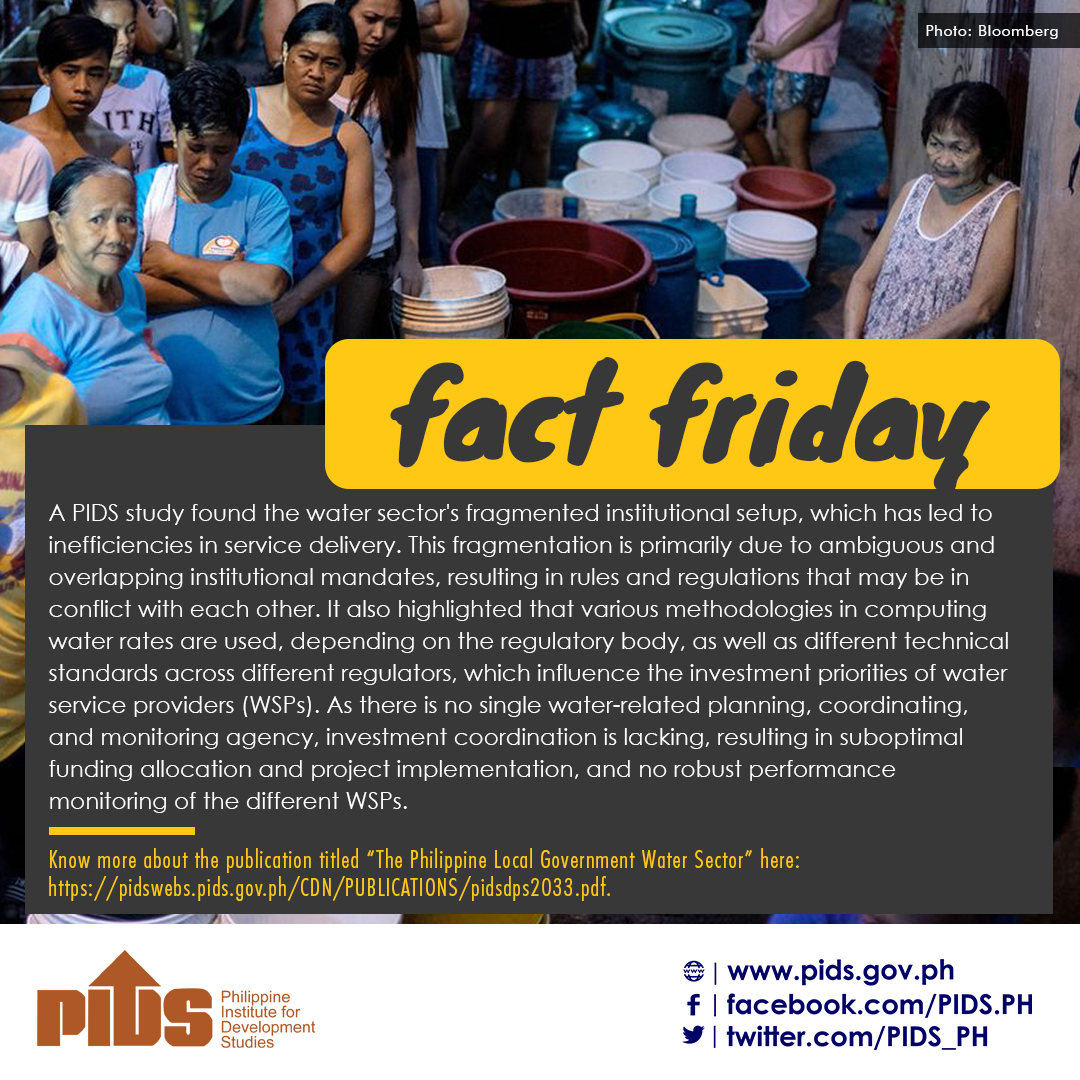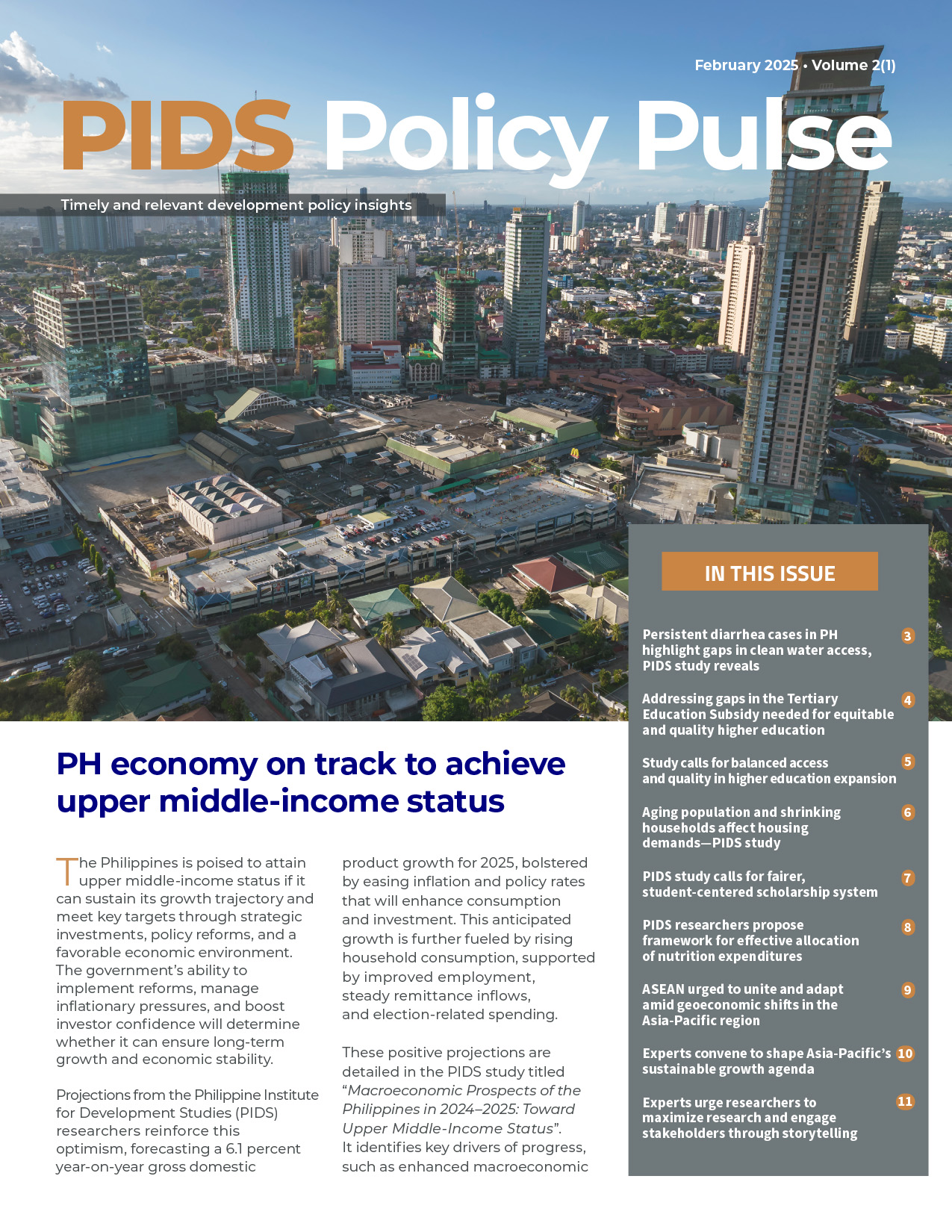
Hello, PIDS friends! Here's our #FactFriday for the week on the state of the local water sector.
A PIDS study found the water sector's fragmented institutional setup, which has led to inefficiencies in service delivery. This fragmentation is primarily due to ambiguous and overlapping institutional mandates, resulting in rules and regulations that may be in conflict with each other. It also highlighted that various methodologies in computing water rates are used, depending on the regulatory body, as well as different technical standards across different regulators, which influence the investment priorities of water service providers (WSPs). As there is no single water-related planning, coordinating, and monitoring agency, investment coordination is lacking, resulting in suboptimal funding allocation and project implementation, and no robust performance monitoring of the different WSPs.
Know more about the publication titled “The Philippine Local Government Water Sector” here: https://pidswebs.pids.gov.ph/.../PUBLICAT.../pidsdps2033.pdf.
A PIDS study found the water sector's fragmented institutional setup, which has led to inefficiencies in service delivery. This fragmentation is primarily due to ambiguous and overlapping institutional mandates, resulting in rules and regulations that may be in conflict with each other. It also highlighted that various methodologies in computing water rates are used, depending on the regulatory body, as well as different technical standards across different regulators, which influence the investment priorities of water service providers (WSPs). As there is no single water-related planning, coordinating, and monitoring agency, investment coordination is lacking, resulting in suboptimal funding allocation and project implementation, and no robust performance monitoring of the different WSPs.
Know more about the publication titled “The Philippine Local Government Water Sector” here: https://pidswebs.pids.gov.ph/.../PUBLICAT.../pidsdps2033.pdf.
Gallery Images:








